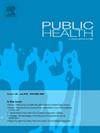Bystander interventions and clinical outcomes among adult out-of-hospital cardiac arrest victims in South Korea over a decade: Sex-based disparities
IF 3.9
3区 医学
Q1 PUBLIC, ENVIRONMENTAL & OCCUPATIONAL HEALTH
引用次数: 0
Abstract
Objective
Delivering bystander interventions is key to improving out-of-hospital cardiac arrest (OHCA) outcomes. Despite reports on sex disparities in bystander interventions and clinical outcomes, comprehensive national-scale assessments in South Korea remain insufficient. Therefore, this study aimed to evaluate nationwide trends over a decade and examine sex disparities in bystander interventions among adult victims of OHCA in South Korea.
Study design
Population-based cohort study.
Methods
We analysed bystander interventions and clinical outcomes among adult OHCA using data from the government's Out-of-Hospital Cardiac Arrest Surveillance between January 2009 and December 2019. We further assessed sex-based differences according to the arrest location, bystander type, and age group.
Results
This study included a total of 209,901 victims of OHCA. The rate of bystander cardiopulmonary resuscitation (BCPR) improved from 3 % in 2009 to 25 % in 2019. Over the past decade, the usage rate of automated external defibrillators (AEDs) has consistently remained below 1 %. Compared to males, females received BCPR at an odds ratio (OR) of 1·05. However, in public locations, when the bystander was a non-family member, and for those over the age of 65 years, the ORs were 0·80, 0·88, and 0·96, respectively. A gap in sex disparity was observed annually when cardiac arrests occurred in public locations and the bystander was not a family member.
Conclusions
Sex disparities in BCPR are pronounced based on arrest location and bystander type. BCPR education programmes should be designed to address OHCA cases across sexes, and improvements in AED usage should be made.
求助全文
约1分钟内获得全文
求助全文
来源期刊

Public Health
医学-公共卫生、环境卫生与职业卫生
CiteScore
7.60
自引率
0.00%
发文量
280
审稿时长
37 days
期刊介绍:
Public Health is an international, multidisciplinary peer-reviewed journal. It publishes original papers, reviews and short reports on all aspects of the science, philosophy, and practice of public health.
 求助内容:
求助内容: 应助结果提醒方式:
应助结果提醒方式:


